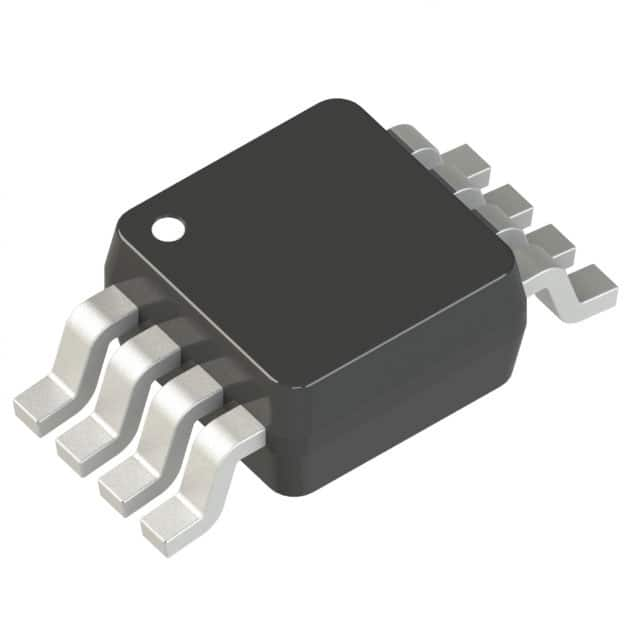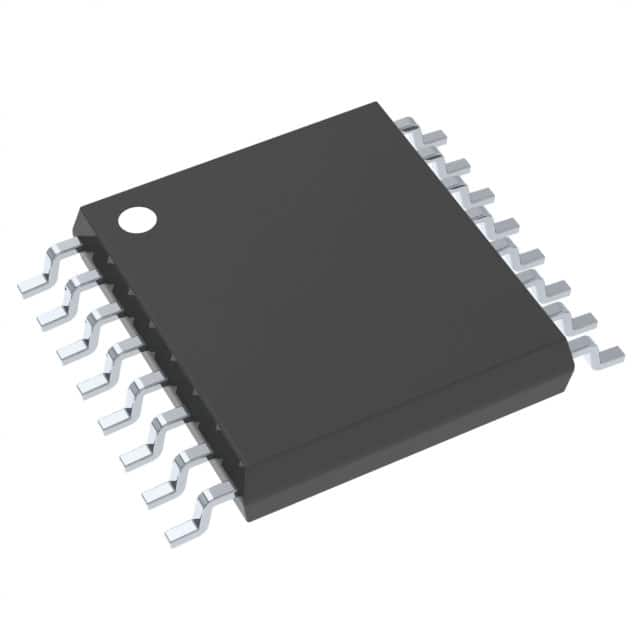Ⅰ. PMIC - PFC (Power Factor Correction)
Ⅱ. Physical Characteristics of PMIC - PFC (Power Factor Correction)
Ⅲ. Electrical Characteristics of PMIC - PFC (Power Factor Correction)
PMIC - PFC (Power Factor Correction)
PMIC (Power Management Integrated Circuit) Power Factor Correction (PFC) controllers are specialized ICs used to improve the power factor of electronic systems. Power factor correction is a technique used to align the current waveform drawn from the AC power source with the voltage waveform, resulting in a higher power factor. A high power factor helps in reducing power line losses, improving efficiency, and complying with power quality standards.

Here are some key aspects and features of PMIC PFC controllers:
1.Power Factor Correction Modes: PMIC PFC controllers support different power factor correction modes, such as Continuous Conduction Mode (CCM) and Discontinuous Conduction Mode (DCM). These modes determine the operation and control strategy used to correct the power factor.
2.Power Factor Correction Algorithm: PMIC PFC controllers employ sophisticated algorithms to control the power factor correction process. These algorithms monitor the input voltage and current waveforms, analyze the phase relationship, and adjust the power factor to achieve the desired target.
3.Input Voltage Range: PMIC PFC controllers have a specified input voltage range within which they can operate. This range corresponds to the AC power supply voltage and ensures compatibility with different power systems and voltages.
4.Output Voltage Regulation: PMIC PFC controllers regulate the output voltage to a stable level, ensuring that the corrected power factor does not adversely affect the performance of downstream power conversion stages or connected loads.
5.Power Conversion Efficiency: PMIC PFC controllers strive for high power conversion efficiency to minimize energy losses during the power factor correction process. Higher efficiency helps reduce power consumption and heat dissipation, resulting in improved overall system efficiency.
6.Current Sensing and Control: PMIC PFC controllers incorporate current sensing techniques to accurately measure the input current waveform. This information is then used to generate control signals that adjust the power factor correction circuitry accordingly.
7.Protection Features: PMIC PFC controllers may include protection features to safeguard against overcurrent, overvoltage, and overtemperature conditions. These protections ensure safe and reliable operation and protect the PMIC and connected components.
8.Communication Interfaces: PMIC PFC controllers may have integrated communication interfaces, such as I2C or SPI, to enable monitoring, control, and configuration of the PFC operation. These interfaces facilitate communication with the main system controller or management software.
9.EMI and EMC Compliance: PMIC PFC controllers comply with electromagnetic interference (EMI) and electromagnetic compatibility (EMC) standards to minimize noise and ensure proper operation without interfering with other devices or being affected by external electromagnetic disturbances.
PMIC PFC controllers play a crucial role in improving power factor and ensuring efficient and reliable operation of electronic systems. By actively correcting the power factor, these controllers help reduce energy waste, improve system performance, and comply with power quality regulations and standards.
Physical Characteristics of PMIC - PFC (Power Factor Correction)
The physical characteristics of PMIC (Power Management Integrated Circuit) Power Factor Correction (PFC) controllers can vary depending on the specific design and packaging of the integrated circuit. However, here are some common physical characteristics associated with these components:
1.Package: PMIC PFC controllers are typically integrated into the overall package of the PMIC itself. The package can be a small surface-mount package, such as a QFN (Quad Flat No-leads), BGA (Ball Grid Array), or a flip-chip package. These packages are compact and suitable for integration into various power electronic systems.
2.Pin Configuration: PMIC PFC controllers have specific pins for power supply connections, input and output voltage connections, control signals, and other interfaces required for their operation. The pinout depends on the specific PFC controller model and the requirements of the power system.
3.Die Size: The physical size of the PFC controller circuitry within the PMIC can vary depending on the design and functionality. The die size is typically small to accommodate integration with other components on the chip.
4.Manufacturing Technology: PMIC PFC controllers are manufactured using semiconductor fabrication processes. The manufacturing technology can vary, such as CMOS (Complementary Metal-Oxide-Semiconductor), BCD (Bipolar-CMOS-DMOS), or BiCMOS (Bipolar-CMOS) technologies. The choice of technology depends on factors like power handling capabilities, efficiency requirements, and cost considerations.
5.Operating Temperature Range: PMIC PFC controllers are designed to operate within a specified temperature range. This range indicates the ambient temperature conditions under which the PFC controller can function reliably. It is crucial to consider the operating temperature range to ensure the performance and longevity of the controller in various environmental conditions.
6.Input and Output Connectors: PMIC PFC controllers may have input and output connectors or pads for power and control signal connections. These connectors facilitate the integration of the PFC controller into the power system or power supply unit.
7.Package Markings: PMIC PFC controllers typically feature package markings that provide important information such as the manufacturer's logo, part number, date code, and other relevant identifiers. These markings assist in component identification and traceability.
These are some of the physical characteristics associated with PMIC PFC controllers. The specific details and features may vary depending on the specific PFC controller model, the targeted application, and the manufacturing process.

Electrical Characteristics of PMIC - PFC (Power Factor Correction)
The electrical characteristics of PMIC (Power Management Integrated Circuit) Power Factor Correction (PFC) controllers are important specifications that determine their performance and functionality. Here are some common electrical characteristics associated with these controllers:
1.Input Voltage Range: PMIC PFC controllers have a specified input voltage range within which they can operate. This range corresponds to the AC power supply voltage and ensures compatibility with different power systems and voltages.
2.Input Current: PMIC PFC controllers draw an input current from the AC power source. The input current depends on factors such as the power level, power factor, and load conditions. It is important to consider the input current requirements to ensure that the power source can provide the necessary current.
3.Power Factor (PF): PMIC PFC controllers aim to improve the power factor of the power system. The power factor is a measure of how effectively electrical power is utilized. PMIC PFC controllers typically achieve power factors close to unity (1.0), indicating efficient power usage.
4.Efficiency: PMIC PFC controllers strive for high power conversion efficiency. Efficiency is the ratio of output power to input power and indicates how effectively the PFC controller converts electrical power. Higher efficiency means less power loss and improved overall system efficiency.
5.Power Handling Capability: PMIC PFC controllers have a specified power handling capability that determines the maximum power they can handle. This capability is usually expressed in watts (W) and depends on the specific PFC controller model.
6.Control Signals: PMIC PFC controllers receive control signals to adjust the power factor correction process. These control signals can include enable/disable signals, feedback signals, and other signals necessary for proper operation.
7.Protection Features: PMIC PFC controllers may include protection features such as overcurrent protection, overvoltage protection, and overtemperature protection. These protections ensure the safe operation of the PMIC and protect the connected components from potential faults or damage.
8.Harmonic Distortion: PMIC PFC controllers aim to reduce harmonic distortion in the power system. Harmonics are undesirable frequencies that can cause power quality issues. PMIC PFC controllers help mitigate harmonic distortion, ensuring compliance with power quality standards.
9.Communication Interfaces: Some PMIC PFC controllers offer communication interfaces such as I2C or SPI. These interfaces enable monitoring, control, and configuration of the PFC operation, allowing for integration with system controllers or management software.
10.EMI and EMC Compliance: PMIC PFC controllers comply with electromagnetic interference (EMI) and electromagnetic compatibility (EMC) standards. They are designed to minimize EMI emissions and ensure proper operation without interfering with other devices or being affected by external electromagnetic disturbances.
These electrical characteristics define the performance, compatibility, and efficiency of PMIC PFC controllers. It is important to consider these specifications when selecting and integrating PFC controllers into power electronic systems to ensure reliable and efficient power factor correction.
标签:PMIC correction



